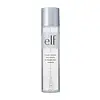What's inside
What's inside
 Key Ingredients
Key Ingredients

 Benefits
Benefits

 Concerns
Concerns

No concerns
 Ingredients Side-by-side
Ingredients Side-by-side

Water
Skin ConditioningAlcohol
AntimicrobialButylene Glycol
HumectantGlycerin
HumectantPropylene Glycol
HumectantHamamelis Virginiana Water
AstringentSodium Hyaluronate
HumectantAloe Barbadensis Leaf Extract
EmollientHexylene Glycol
EmulsifyingFructose
HumectantGlucose
HumectantSucrose
HumectantGlutamic Acid
HumectantAspartic Acid
MaskingHexyl Nicotinate
EmollientAlanine
MaskingDextrin
AbsorbentUrea
BufferingCoceth-6
EmulsifyingPPG-1-PEG-9 Lauryl Glycol Ether
EmulsifyingPEG-40 Hydrogenated Castor Oil
EmulsifyingSodium Citrate
BufferingDisodium EDTA
Benzoic Acid
MaskingPhenoxyethanol
PreservativeEthylhexylglycerin
Skin ConditioningCaprylyl Glycol
EmollientParfum
MaskingWater, Alcohol, Butylene Glycol, Glycerin, Propylene Glycol, Hamamelis Virginiana Water, Sodium Hyaluronate, Aloe Barbadensis Leaf Extract, Hexylene Glycol, Fructose, Glucose, Sucrose, Glutamic Acid, Aspartic Acid, Hexyl Nicotinate, Alanine, Dextrin, Urea, Coceth-6, PPG-1-PEG-9 Lauryl Glycol Ether, PEG-40 Hydrogenated Castor Oil, Sodium Citrate, Disodium EDTA, Benzoic Acid, Phenoxyethanol, Ethylhexylglycerin, Caprylyl Glycol, Parfum
Water
Skin Conditioning1,2-Hexanediol
Skin ConditioningPanthenol
Skin ConditioningLimnanthes Alba Seed Oil
Skin ConditioningEthylhexylglycerin
Skin ConditioningSodium Hyaluronate
HumectantDipropylene Glycol
HumectantSphingolipids
EmollientButylene Glycol
HumectantCeramide NP
Skin ConditioningPolyglutamic Acid
Skin ConditioningSaccharide Isomerate
HumectantGluconolactone
Skin ConditioningBeta-Glucan
Skin ConditioningPullulan
Xanthan Gum
EmulsifyingGlycerin
HumectantCarbomer
Emulsion StabilisingTocopherol
AntioxidantCitric Acid
BufferingTromethamine
BufferingSodium Citrate
BufferingSymphytum Officinale Root Extract
Skin ConditioningSodium Phytate
Methyl Glucose Sesquistearate
EmollientHydrogenated Lecithin
EmulsifyingCetearyl Glucoside
EmulsifyingPolyglyceryl-3 Methylglucose Distearate
EmulsifyingCentella Asiatica Extract
CleansingWater, 1,2-Hexanediol, Panthenol, Limnanthes Alba Seed Oil, Ethylhexylglycerin, Sodium Hyaluronate, Dipropylene Glycol, Sphingolipids, Butylene Glycol, Ceramide NP, Polyglutamic Acid, Saccharide Isomerate, Gluconolactone, Beta-Glucan, Pullulan, Xanthan Gum, Glycerin, Carbomer, Tocopherol, Citric Acid, Tromethamine, Sodium Citrate, Symphytum Officinale Root Extract, Sodium Phytate, Methyl Glucose Sesquistearate, Hydrogenated Lecithin, Cetearyl Glucoside, Polyglyceryl-3 Methylglucose Distearate, Centella Asiatica Extract
 Reviews
Reviews

Ingredients Explained
These ingredients are found in both products.
Ingredients higher up in an ingredient list are typically present in a larger amount.
Butylene Glycol (or BG) is used within cosmetic products for a few different reasons:
Overall, Butylene Glycol is a safe and well-rounded ingredient that works well with other ingredients.
Though this ingredient works well with most skin types, some people with sensitive skin may experience a reaction such as allergic rashes, closed comedones, or itchiness.
Learn more about Butylene GlycolEthylhexylglycerin (we can't pronounce this either) is commonly used as a preservative and skin softener. It is derived from glyceryl.
You might see Ethylhexylglycerin often paired with other preservatives such as phenoxyethanol. Ethylhexylglycerin has been found to increase the effectiveness of these other preservatives.
Glycerin is already naturally found in your skin. It helps moisturize and protect your skin.
A study from 2016 found glycerin to be more effective as a humectant than AHAs and hyaluronic acid.
As a humectant, it helps the skin stay hydrated by pulling moisture to your skin. The low molecular weight of glycerin allows it to pull moisture into the deeper layers of your skin.
Hydrated skin improves your skin barrier; Your skin barrier helps protect against irritants and bacteria.
Glycerin has also been found to have antimicrobial and antiviral properties. Due to these properties, glycerin is often used in wound and burn treatments.
In cosmetics, glycerin is usually derived from plants such as soybean or palm. However, it can also be sourced from animals, such as tallow or animal fat.
This ingredient is organic, colorless, odorless, and non-toxic.
Glycerin is the name for this ingredient in American English. British English uses Glycerol/Glycerine.
Learn more about GlycerinSodium Citrate is the sodium salts of citric acid. In skincare, it is used to alter pH levels and acts as a preservative.
Its main functions are to maintain the pH of a product and neutralize metal ions.
The acidity of our skin is maintained by our glands and skin biome; normal pH level of skin is slightly acidic (~4.75-5.5).
Being slightly acidic allows our skin to create an "acid mantle". This acid mantle is a thin barrier that protects our skin from bacteria and contaminants.
Learn more about Sodium CitrateSodium Hyaluronate is hyaluronic acid's salt form. It is commonly derived from the sodium salt of hyaluronic acid.
Like hyaluronic acid, it is great at holding water and acts as a humectant. This makes it a great skin hydrating ingredient.
Sodium Hyaluronate is naturally occurring in our bodies and is mostly found in eye fluid and joints.
These are some other common types of Hyaluronic Acid:
Learn more about Sodium HyaluronateWater. It's the most common cosmetic ingredient of all. You'll usually see it at the top of ingredient lists, meaning that it makes up the largest part of the product.
So why is it so popular? Water most often acts as a solvent - this means that it helps dissolve other ingredients into the formulation.
You'll also recognize water as that liquid we all need to stay alive. If you see this, drink a glass of water. Stay hydrated!
Learn more about Water